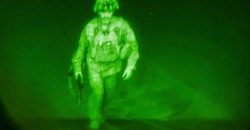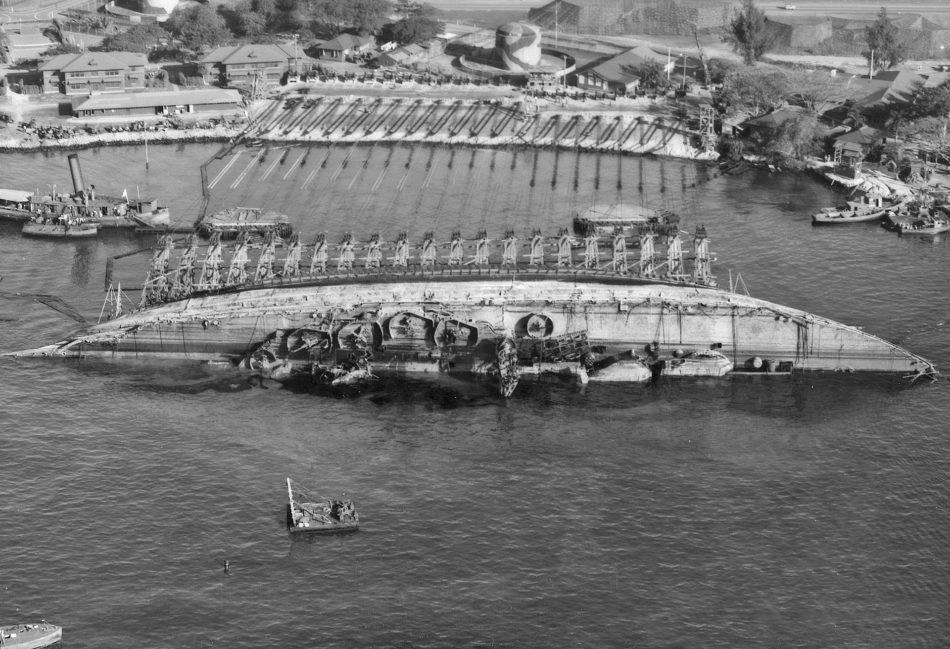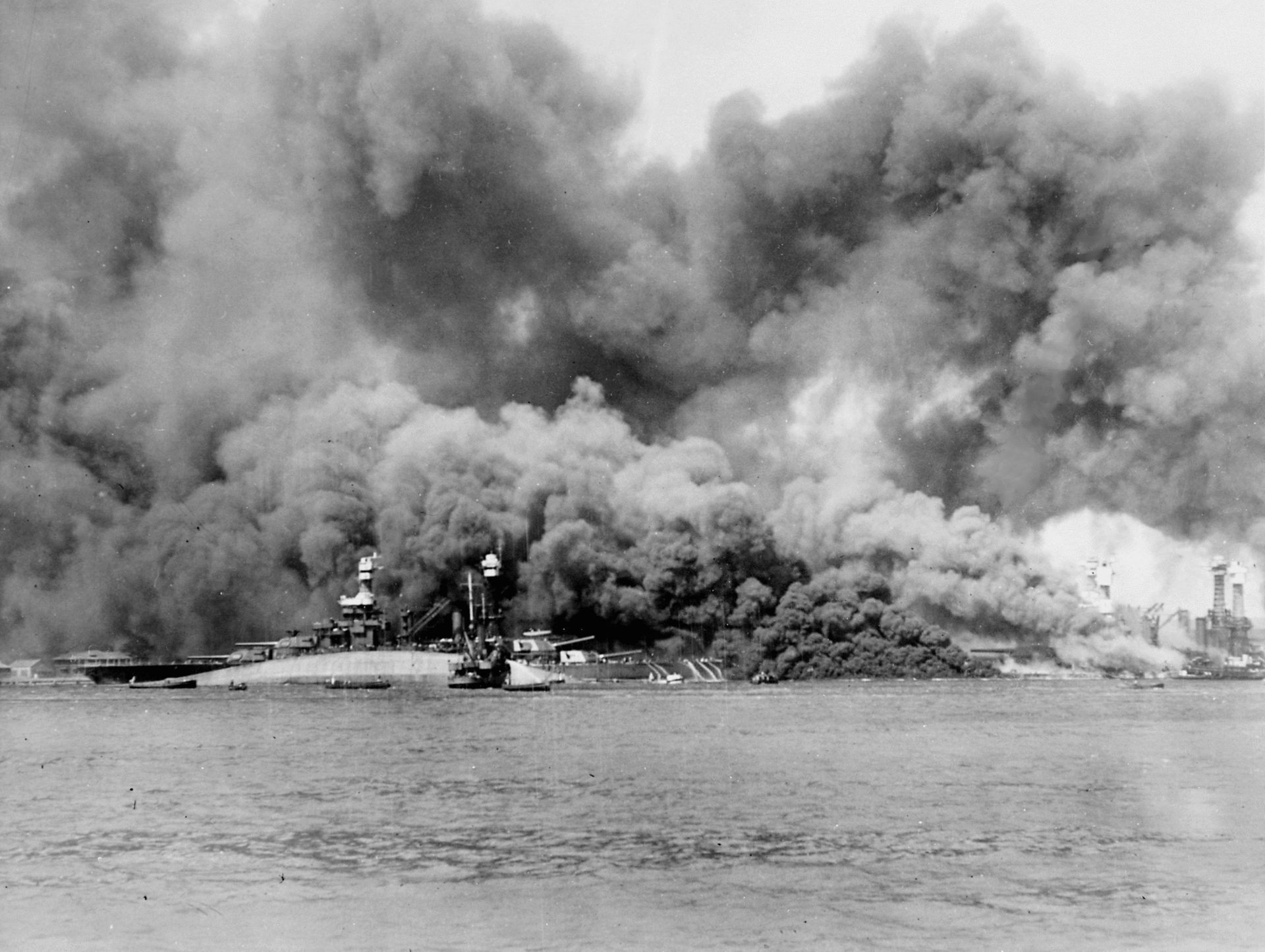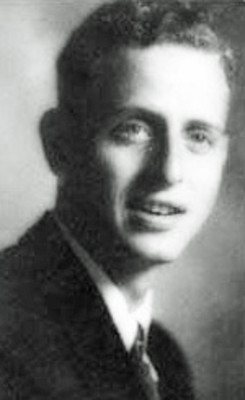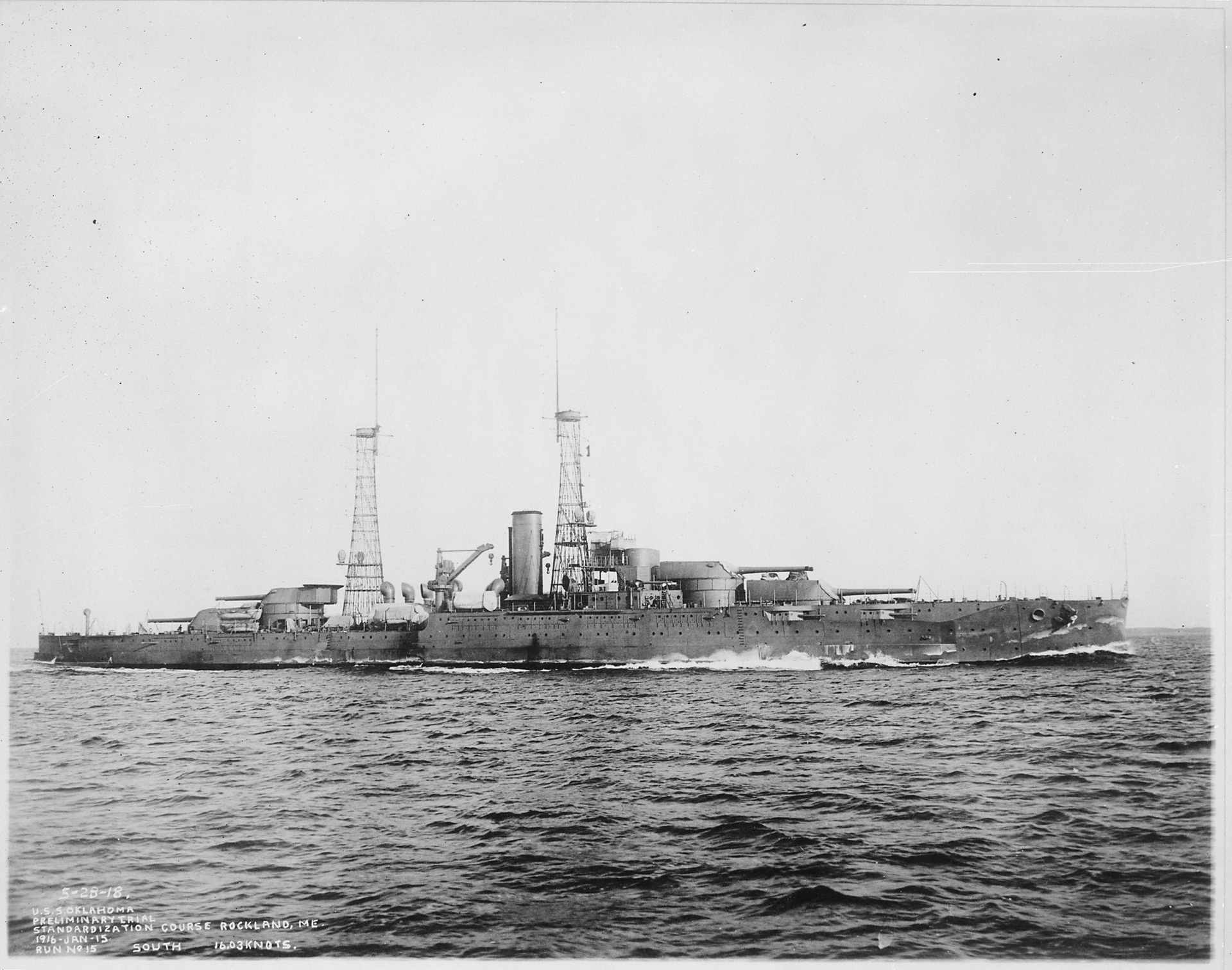Eugene è tornato a casa. Dopo 78 anni dal terribile attacco giapponese a Pearl Harbor nel quale perse la vita. Ucciso in quella bara d’acciaio che fu la corazzata USS Oklahoma. I suoi resti sono stati esumati per l’identificazione attraverso il DNA, effettuata dall’Agenzia POW / MIA del Dipartimento della Difesa americano. Eugene K. Eberhardt era macchinista di prima classe della Marina, ed era originario di Newark, nel New Jersey. Aveva 29 anni. Il 7 dicembre 1941, Eberhardt fu assegnato alla corazzata USS Oklahoma, che fu attraccata a Ford Island, Pearl Harbor, dagli aerosiluranti giapponesi.
La storia dell’Uss Oklahoma
La corazzata Oklahoma, dopo aver subito numerosi colpi, si capovolse su un fianco. L’attacco alla nave ha provocato la morte di 429 membri dell’equipaggio, tra cui Eberhardt. Dal dicembre 1941 al giugno 1944, il personale della Marina recuperò i resti dell’equipaggio deceduto, che furono successivamente sepolti nei cimiteri di Halawa e Nu’uanu.
Nel settembre del 1947, con il compito di recuperare e identificare il personale statunitense caduto nel Pacific Theatre, i membri dell’American Graves Registration Service Usa dissotterrarono i resti di vittime statunitensi dai due cimiteri e li trasferirono al Central Identification Laboratory della Schofield Barracks. Lo staff di laboratorio fu in grado di confermare le identificazioni di 35 uomini dell’USS Oklahoma in quel momento. Successivamente l’organismo governativo seppellì i resti non identificati in 46 lotti al National Memorial Cemetery of the Pacific, noto come il Punchbowl, a Honolulu. Nell’ottobre del 1949 un consiglio militare classificò coloro che non potevano essere identificati come non recuperabili, incluso Eberhardt.
Analisi del DNA per identificare i dispersi
Nell’aprile 2015, su ordine dell’allora Vice Segretario della Difesa si decise di procedere all’identificazione di tutti i marinai caduti sull’USS Oklahoma. Il 15 giugno 2015, il personale dell’Agenzia per i caduti iniziò a riesumare i resti dal Punchbowl per le analisi. Per identificare i resti di Eberhardt, gli scienziati della DPAA e del sanità militare Usa hanno utilizzato analisi del DNA mitocondriale (mtDNA) e cromosoma Y (Y-STR), nonché analisi antropologiche e prove circostanziali. Eugene è stato riconosciuto grazie a questi sofisticati test durati anni, la conferma ufficiale è della fine di gennaio 2019. Ben 78 anni dopo e quattro anni dopo l’esumazione. Il lavoro per identificare gli altri dispersi dell’Uss Oklahoma va ancora avanti.
Dei 16 milioni di americani che hanno prestato servizio nella seconda guerra mondiale, oltre 400.000 sono morti durante la guerra. Attualmente ci sono 72.750 uomini (circa 26.000 sono valutati come potenzialmente recuperabili) ancora dispersi dalla seconda guerra mondiale. Il nome di Eberhardt è registrato sulla lapide dei dispersi al Punchbowl, insieme agli altri che mancano. Una rosetta verrà scolpita accanto al suo nome per indicare che è stato identificato.
USS Oklahoma Sailor Accounted For From World War II
The Defense POW/MIA Accounting Agency (DPAA) announced today that the remains of Navy Machinist’s Mate 1st Class Eugene K. Eberhardt., 29, of Newark, New Jersey, killed during World War II, was accounted for on July 3, 2018.
On Dec. 7, 1941, Eberhardt was assigned to the battleship USS Oklahoma, which was moored at Ford Island, Pearl Harbor, when the ship was attacked by Japanese aircraft. The USS Oklahoma sustained multiple torpedo hits, which caused it to quickly capsize. The attack on the ship resulted in the deaths of 429 crewmen, including Eberhardt.
From December 1941 to June 1944, Navy personnel recovered the remains of the deceased crew, which were subsequently interred in the Halawa and Nu’uanu Cemeteries.
In September 1947, tasked with recovering and identifying fallen U.S. personnel in the Pacific Theater, members of the American Graves Registration Service (AGRS) disinterred the remains of U.S. casualties from the two cemeteries and transferred them to the Central Identification Laboratory at Schofield Barracks. The laboratory staff was only able to confirm the identifications of 35 men from the USS Oklahoma at that time. The AGRS subsequently buried the unidentified remains in 46 plots at the National Memorial Cemetery of the Pacific, known as the Punchbowl, in Honolulu. In October 1949, a military board classified those who could not be identified as non-recoverable, including Eberhardt.
In April 2015, the Deputy Secretary of Defense issued a policy memorandum directing the disinterment of unknowns associated with the USS Oklahoma. On June 15, 2015, DPAA personnel began exhuming the remains from the Punchbowl for analysis.
To identify Eberhardt’s remains, scientists from DPAA and the Armed Forces Medical Examiner System used mitochondrial (mtDNA) and Y-chromosome (Y-STR) DNA analysis, as well as anthropological analysis and circumstantial evidence.
DPAA is grateful to the Department of Veterans Affairs for their partnership in this recovery.
Of the 16 million Americans who served in World War II, more than 400,000 died during the war. Currently there are 72,750 (approximately 26,000 are assessed as possibly-recoverable) still unaccounted for from World War II. Eberhardt’s name is recorded on the Courts of the Missing at the Punchbowl, along with the others who are missing from WWII. A rosette will be placed next to his name to indicate he has been accounted for.



